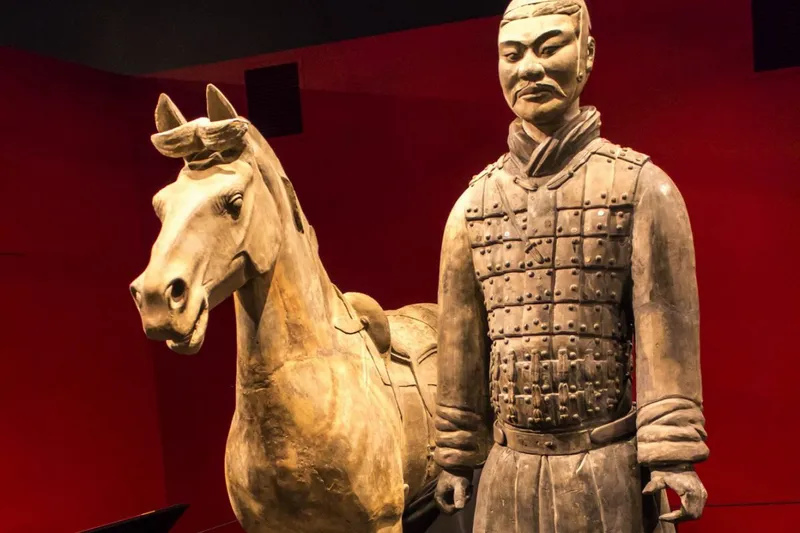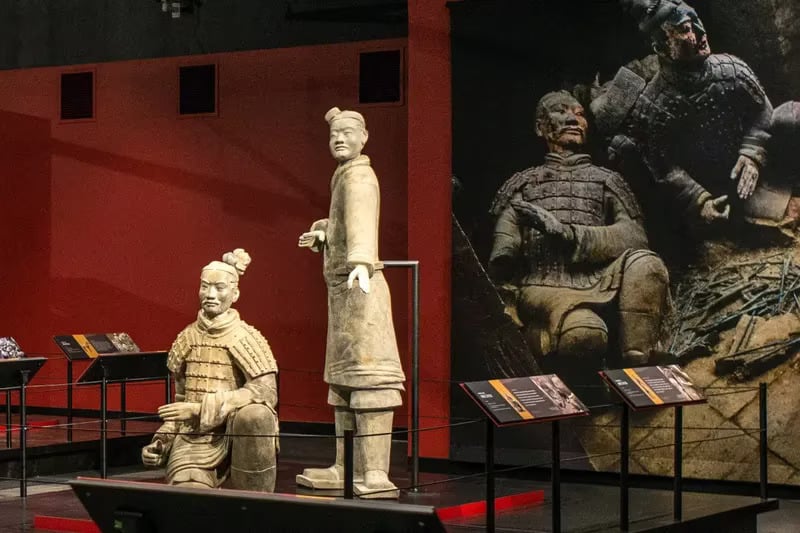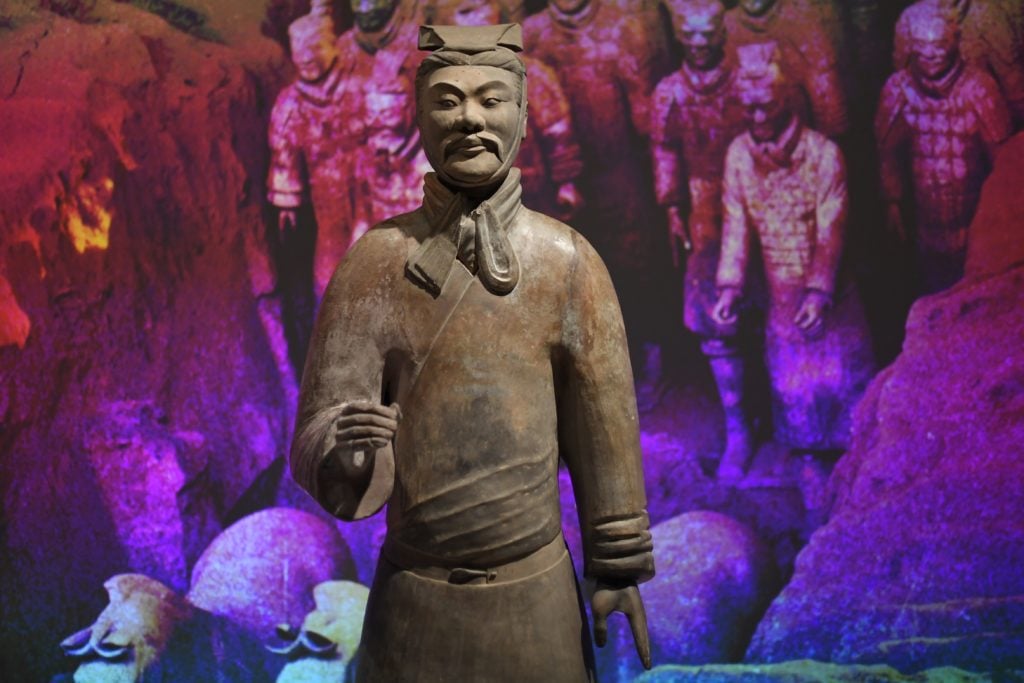Crime
A Drunken Party Guest Has Pled Guilty to Stealing the Thumb of a $4.5 Million Terracotta Warrior at a Philadelphia Museum
He faces a maximum sentence of two years in jail and a fine of $20,000.

He faces a maximum sentence of two years in jail and a fine of $20,000.

Sarah Cascone

A drunken night at the Philadelphia’s Franklin Institute won’t end with decades behind bars for museum visitor Michael Rohana, who has accepted a plea deal for stealing a finger from one of China’s famed Terracotta Warrior sculptures during an ugly Christmas sweater party.
Rohana is scheduled to plead guilty to charges of interstate trafficking in Philadelphia federal court on March 17, reports Philadelphia’s Kyw Newsradio. The maximum sentence will be two years in jail and a fine of $20,000. That’s down from the 30-year prison sentence he previously faced on charges of theft and concealment of an object of cultural heritage from a museum. The first trial in the case ended in a mistrial when the jury couldn’t agree on the verdict, and the second was delayed due to COVID.
The Franklin Institute exhibition, “Terracotta Warriors of the First Emperor,” organized with Seattle’s Pacific Science Center, featured 10 life-size warrior statues from the Terracotta Army buried in the tomb of China’s first emperor, Qin Shi Huang. Rural farmers discovered tomb, filled with some 8,000 soldiers from 210 to 209 B.C.E., in northwest China in the 1970s.
Rohana was just 24 years old when he attended an after-hours party at the Franklin Institute on December 21, 2017. During the event, he wandered into the museum galleries, which were unlocked, and slipped past a stanchion rope blocking the entrance to enter the darkened exhibition.

Installation view of “Terracotta Warriors of the First Emperor” at the Franklin Institute, Philadelphia. Photo courtesy of the Franklin Institute, Philadelphia.
Video surveillance captured Rohana—wearing a Phillies baseball cap and a bright green sweater—posing for a selfie with an arm wrapped around a 2,000-year-old sculpture known as The Cavalryman, which was insured at $4.5 million. As he walked away, Rohana seemed to break something off the figure’s left hand and place it in his pocket.
It wasn’t until January 8 that the Franklin Institute noticed that the statue’s thumb was missing. A review of security footage, combined with credit card records from guests who purchased tickets to the event, allowed an FBI investigation to finger Rohana—pun intended—as the culprit.
Friends with whom he attended the party later testified that he had spoken during the car ride home about taking the statue’s finger, and even shared an image of the terracotta thumb on Snapchat.
When FBI special agent Jacob B. Archer turned up at Rohana’s Delaware residence in February 2018, the suspect immediately confessed to his crime. He then returned the stolen digit, which he he kept stored in his bedroom desk drawer.
China was furious, with Wu Haiyun, director of the Shaanxi Cultural Heritage Promotion Center, which loaned the sculptures to the traveling exhibition, demanding that “the U.S. severely punish the perpetrator,” according to the BBC. (Philadelphia passed an official resolution apologizing for the incident.)
Three months later, a federal grand jury indicted Rohana under the federal art theft statute. When the matter went before a jury, the case resulted in a mistrial in April 2019, with the jury unable to render a verdict. What made the case unique for an art theft proceeding was the lack of financial motive.

Terracotta warriors from the burial complex of China’s Emperor Qin Shi Huang. Photo by Paul Ellis/AFP/Getty Images.
And the statute only applied to artworks with a value of over $5,000. Separated from the figure, how much was the thumb worth on its own, really? Two expert witnesses offered wildly different appraisals. Testifying on behalf of the prosecution, Michael Cohn claimed it was worth five percent of the sculpture’s total value, or $150,000; called by the defense, Lark E. Mason, an expert in Chinese art and antiquities, named a figure of just $1,000.
When Rohana took the stand, he admitted he didn’t know why he had stolen the thumb.
“Every time I see this video now, I’m trying to figure out: ‘What was going through your mind? What were you thinking?’ I don’t know how I could have been so stupid,” he said.
The jury had to ask itself: Did an incident of impulsive, alcohol-fueled vandalism really merit the same punishment as a premeditated art heist? Rohana’s lawyer argued that it did not.
“These charges were made for art thieves—think like Ocean’s Eleven or Mission: Impossible,” Catherine C. Henry told jurors. “[Rohana] wasn’t in ninja clothing sneaking around the museum. He was a drunk kid in a bright green ugly Christmas sweater.”